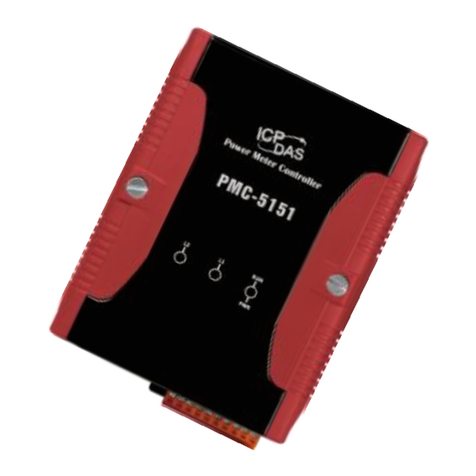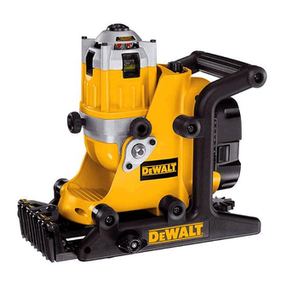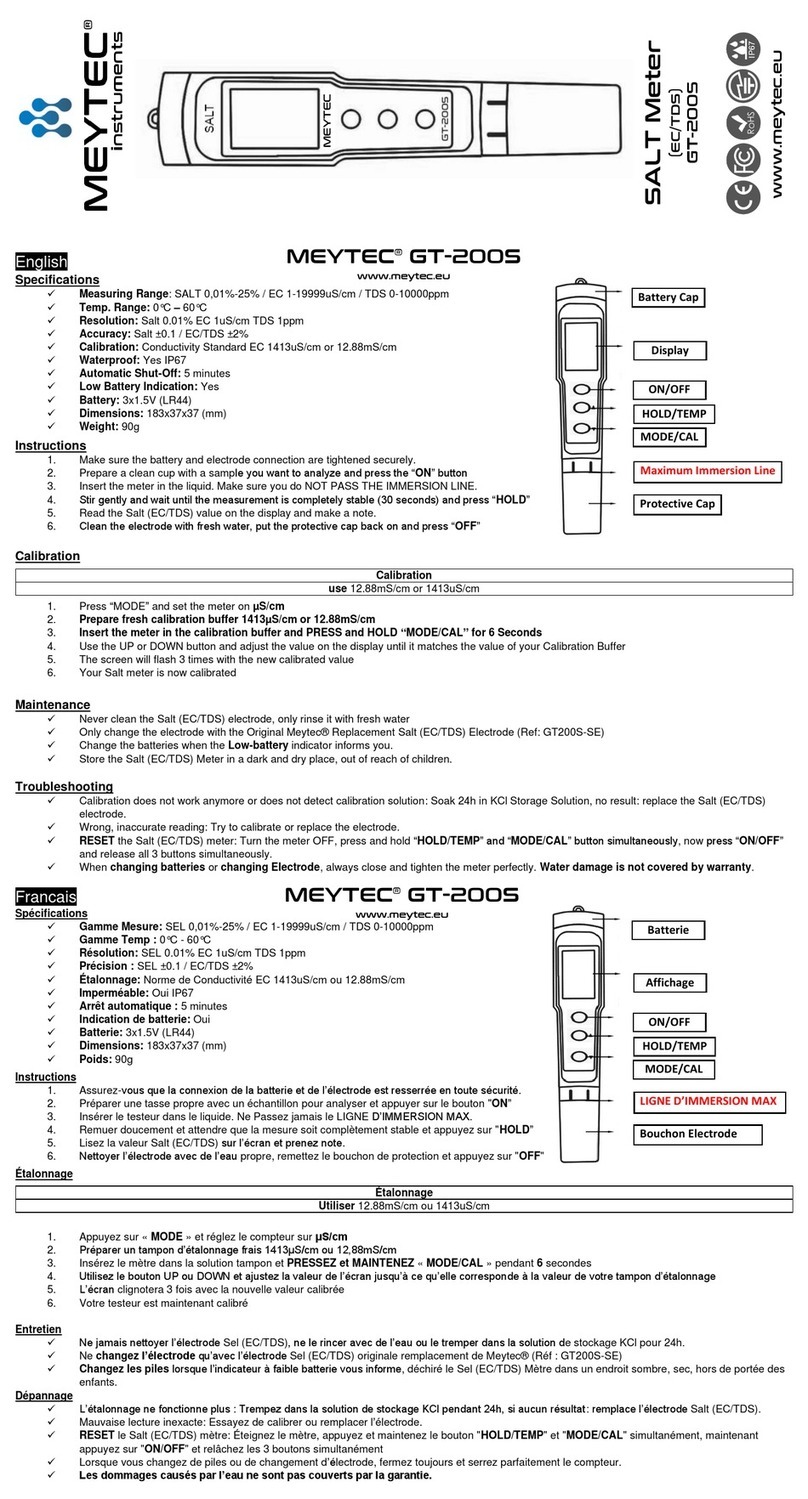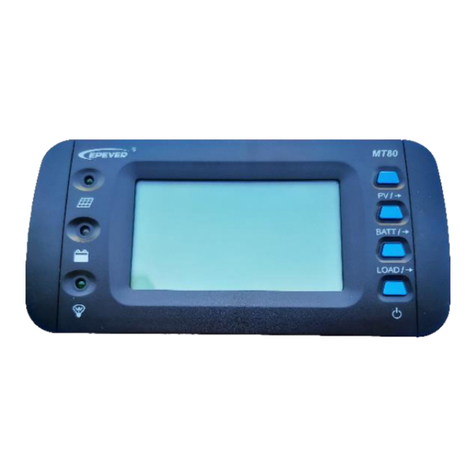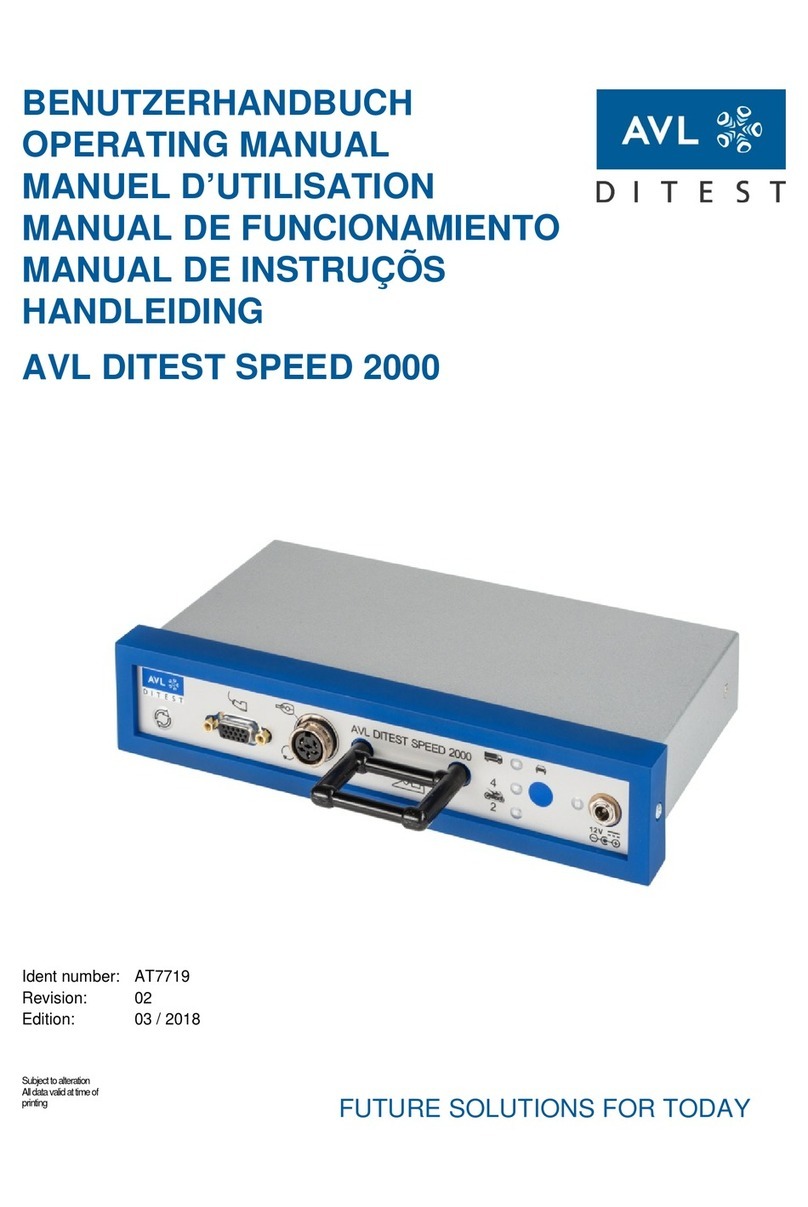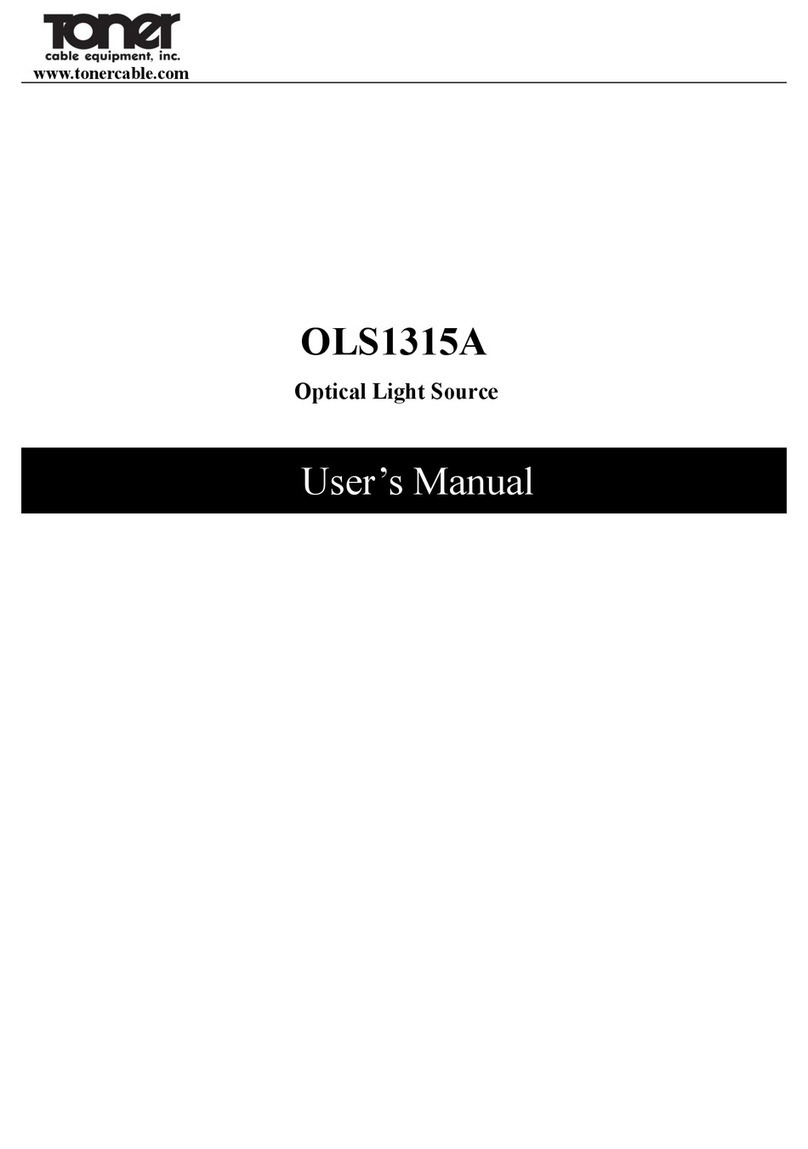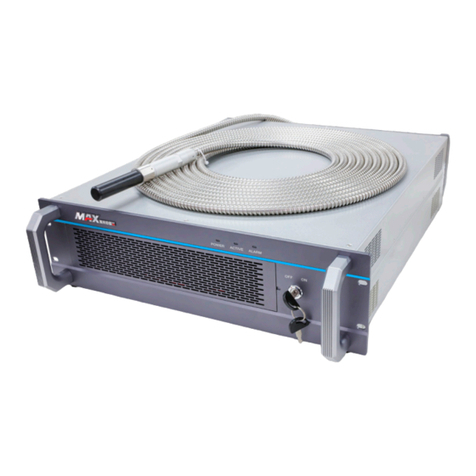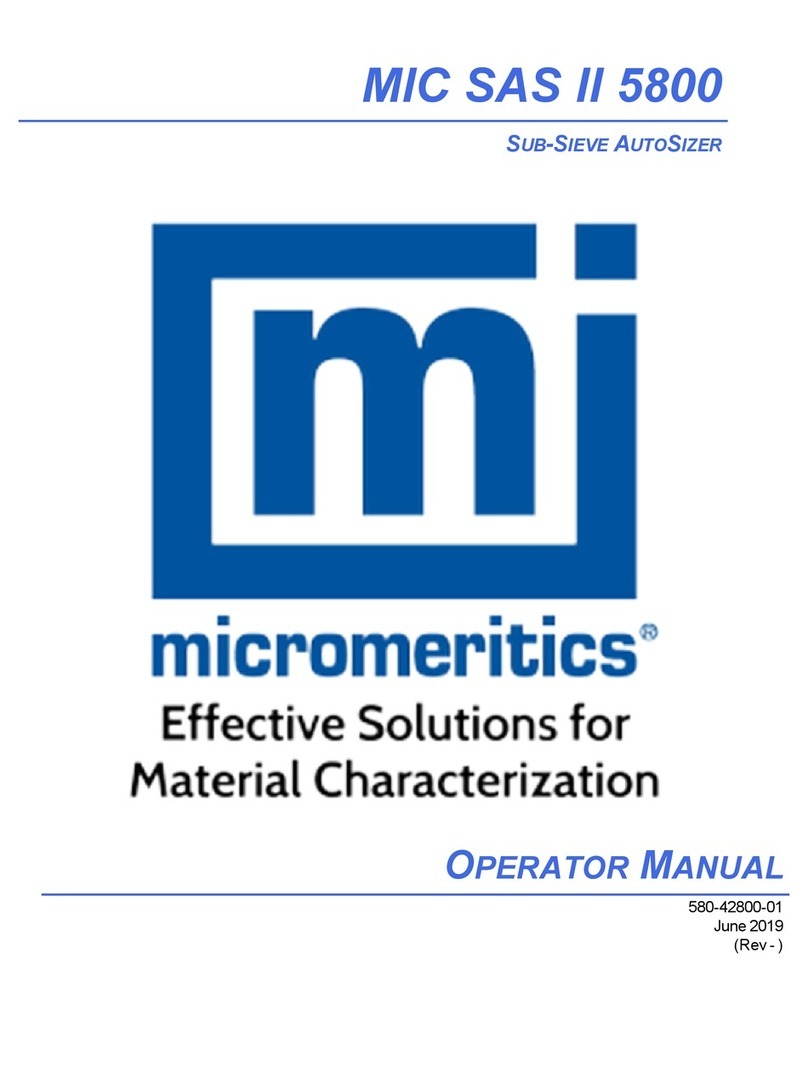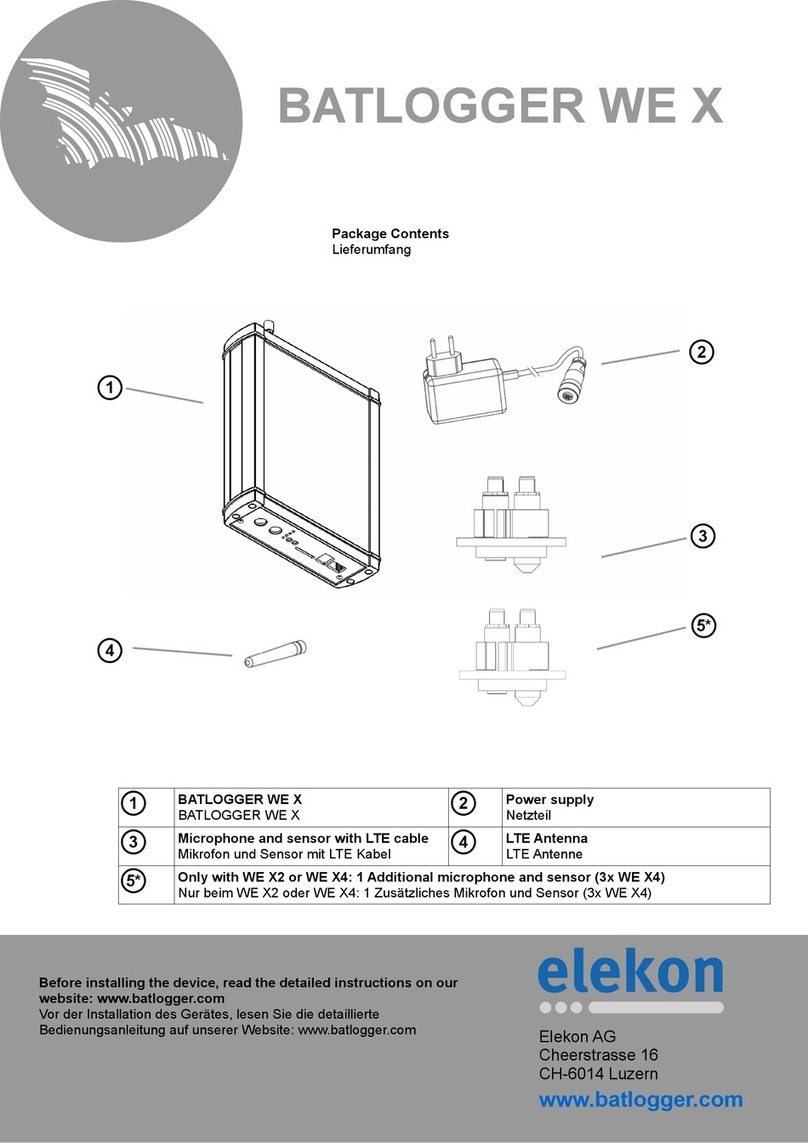Fillauer Myolab II User manual

Myolab II
Prosthetist Manual

2

3
Introduction
The Motion Control Myolab II™, is a versatile two-channel EMG signal
monitor used to display electromyographic activity. The system is an
accessory for the tting of Motion Control’s Utah Articial Arm, and
ProControl 2 myoelectric prosthesis for upper limb amputees.
A myoelectric prosthetic device senses EMG signals from intact
muscles and translates these signals into usable arm movements.
The Myolab II uses this same advanced sensing technology to provide
artifact-free EMG signal monitoring in a compact, easy-to-use system.
Myolab II Components
Myolab II
Prosthetist Manual
Meters On/O
Switch
Sensitivity
Range
Battery
Compartment
(underneath)
“A” Gain “B” Gain
Triad
Preampliers
Audio Volume
T-Cable
Triad Adapter
(not needed for
legacy [blue]
preamps)

4
Indications
The Myolab II is intended for the monitoring and display of
electromyographic signals for the purpose of tting the Utah Arm
and the ProControl 2 prosthetic devices.
Contrandications
Because the Myolab II is a passive monitoring system, no known
contraindications exist for its use.
Special Precautions
Static electricity can damage the EMG sensors of the Myolab
II. Therefore, always pick up the preamplier by touching the
ground (center) electrode rst. This will ensure that any static
electrical charge present on your body is discharged to the
ground electrode, and not to the two sensing electrodes. When
not in use, always keep the preampliers inside the static
protection bag supplied with the preampliers.
Never allow moisture or contaminants to enter the Myolab II or
preampliers.
Avoid using the preampliers in an extremely moist
environment for long periods of time. If the preampliers are
installed inside the socket of a prosthesis, make sure that the
socket provides adequate drainage for perspiration.
System Setup
Changing Batteries
Hold the Myolab II upside down with the battery compartment away
from you. Place both thumbs on the battery door and push down
and away from you. The compartment door will slide out. Connect
the battery to the appropriate terminals. (Note: The use of a Duracell
9 volt alkaline battery or equivalent is recommended.) Be sure to
change batteries whenever the low battery indicator lights.
Connecting the Preamplier Cable
The input preamplier jack is located within the battery compartment
(Figure 2). With the battery compartment door open, connect the
preamplier cable to the ve-hole socket provided. (Note that the
cable can be connected only one way-you cannot plug it in backwards.)
Close the compartment door carefully, insuring that the cable
connector is centered in the opening provided in the battery door. If
using Triad preampliers, plug the Triad to Myolab Adapter (indluded)
into the Myolab II, then plug the Triad preampliers into the adapter.

5
Figure 2
Preparing the Preampliers
The stainless steel electrodes are screwed directly into the
preampliers. This direct mounting technique eliminates artifact
problems caused by movement of electrode lead wires and electrical
interference. However, these electrodes can be removed from the
preampliers and reconnected to them with lead wires having screw
type (4-40 UNC) connectors thereby allowing for remote placement if
so desired.
Ensure that the electrodes or any connector wires used are screwed
snugly (nger tight only) into the preamplier. Do not over-tighten.
Using the Myolab II to Monitor EMG Activity
1. To avoid static damage to the preampliers, always ensure that
the patient is at the same electrical potential as the Myolab. Two
good ways of doing this are:
a) After properly picking up the preamp (ground rst), touch the
patient with your free hand before placing the preamp on the
site being examined.
b) Have the patient touch the ground (center) electrode before
the active (outside) electrode comes in contact with the patient.
2. After guarding the patient, place the preamplier with its
electrodes on the skin directly over the muscle group to be
monitored (Figure 3). Be certain that the three electrodes on
each preamplier are all in good contact with the skin. The
use of a strip of hypoallergenic medical grade tape to hold the
preamplier in place is recommended.

6
Figure 3
Note that very dry skin or areas with a great deal of hair will
signicantly increase skin resistance and can diminish the EMG
signal sensed by the preamplier. Slightly moisten dry skin before
applying the electrodes. Occasionally the operator may wish to
use a small amount of a conductive salt free gel or lotion before
applying the electrodes to extremely hairy areas. Normally, no
such preparation is necessary.
3. If you are using only one preamplier (i.e., monitoring only one
muscle group) be sure to protect the remaining preamplier by
securing it in contact with the patient’s skin or placing it in the
static protection bag. Note: some electrical interference to the
EMG signal can occur if both preampliers are not in contact with
the patient (common ground) during monitoring.
4. Set the gain dials (Gain A and Gain B) to 0.
5. Rotate the sound dials (A and B) to the left until they stop. Sound
monitoring is now o.
6. Place the gain switch in the X1 setting.
7. Place the power switch in the ON position.
8. Slowly turn up the gain dial for the channel (A or B) that you
are using until you reach the appropriate meter reading for your
application. For example, have the patient attempt to contract
the appropriate muscle so that under best eort the needle will
read between 50 and 70 (above the mid-line) on the meter dial.
If the Myolab II is being used to monitor very low amplitude EMG
signals, the sensitivity of the system can be increased by placing
the gain switch in the X10 setting. This will increase the sensitivity
of the system by a factor of 10.

7
9. To determine the actual EMG signal strength (within +/- 10%),
place the gain switch at the X1 setting and the gain dial in the 10
position. The meter will now display the actual EMG in Microvolts,
i.e., 100 (full scale deection) = 100 microvolts. To measure EMG
signals in the 0 to 10 microvolt range, the operator may use the
X10 setting with the gain dial control on.
10. The actual microvolt signal strength is the meter reading divided
by 10, i.e., a full scale deection of the needle to the 100 meter
reading = 10 microvolts.
To determine actual EMG skin microvolts at gain dial settings other
than the 10 position, use the chart in the table below.
Microvolts at Full Scale (Needle at 100) Microvolts per Division
(50 Meter Divisions)
Gain Dial X1 Gain X10 Gain X1 Gain X10 Gain
12 83 8 1.6 .13
10 100 10 2.0 .20
8 125 13 2.6 .26
6 167 17 3.4 .34
4 250 25 5.0 .50
2 500 50 10 1.0
Set the audio volume at the desired level using the appropriate
sound dial. (Note: The pitch of the sound [not the volume] will
increase with an increase in EMG signal intensity. In addition, the
sound of each channel dierentiates the two signals).
At the conclusion of the training session, remove the preampliers
from the patient and turn the power switch o. Be sure to store the
preampliers inside the static protection bag supplied.
Using the Myolab II for EMG Site Selection
1. Before probing for EMG electrode sites, examine the patient for
problem areas such as wounds, scar tissue and painful areas.
Determine the range of motion and areas of muscle inadequacy.
2. All of the remnant muscles which could be used for control sites
should be evaluated before tting a myoelectric prosthesis. Note:
when the biceps or triceps are not present on an amputee, e.g.,
shoulder disarticulation amputee, other control sites such as the
pectoralis and infraspinatus muscles may be successfully used.
Begin EMG probing with the most distal of the remnant muscles.
While probing, have the subject contract the appropriate muscle
being tested.

8
Figure 4 - Use the T-Cable (p/n 5030003) to operate the Utah Arm and Myolab II
Simultaneously
Note: unilateral amputees may be aided in learning to contract a
particular muscle in their remnant limb by mimicking the same
function in the sound arm, e.g., exing the sound elbow and
contracting the biceps simultaneously in both the remnant arm and
Figure 5
the sound arm (Figure 5).
For both bilateral and unilateral
amputees, the motion of the
appropriate joint or the memory
of the lost joint motion may be
utilized to train the remnant
muscle. Remind the subject
to relax the muscles proximal
to the intended muscle
contraction.

9
Mark the location of the strongest EMG signal, and the total area
in which a strong EMG is found.
4. Instruct the patient to “contract-hold-relax” in about a three
second sequence. A smooth and even contraction is desired,
without strenuous eort, with relaxation after each contraction.
Instruct the patient to try to relax the muscles not being tested.
Systematically move the preamplier by one-half inch increments
and ask the patient to perform the “contract-hold-relax” sequence
with the same strength of contraction for at least two repetitions
at each location.
5. When a potential control site is identied, mark the best
electrode location on the skin, and also mark the total area in
which an adequate EMG signal is obtained (Figure 7). This will be
important in locating electrodes in the prosthetic socket. Identify
all potential EMG control sites in this manner.
6. When probing EMG control sites for the Utah Articial Arm, use
the “A” channel of the Myolab II to monitor the muscle (the “A”
muscle) most appropriate to control exion of the elbow of the
prosthesis (usually an anterior muscle such as the biceps or
pectoralis). This muscle is usually recommended for the hand
closing site also, although exceptions are common, (e.g., when the
elbow extension muscle is more easily controlled by the subject).
Figure 6
For example, relax the shoulder when contracting the biceps.
Also, the EMG signal will usually be more controllable if some
resistance is provided to the motion of the remnant limb, either
with the clinician’s hand or the socket of a prosthesis.
3. Palpate the muscle as the patient contracts it and place the
preamplier over the belly of the muscle. Touching the muscle
helps give the subject more sensation of the muscle contraction,
which may help in learning to control the muscle (Figure 6).

10
7. Find the best agonist-antagonist pair of EMG control sites. Use
the “B” channel of the Myolab II to monitor the muscle (the
“B” muscle) most appropriate to control powered extension
of the elbow (and hand opening or closing). In a two-muscle
control system such as the Utah Articial Arm, strength and
independence are important to the agonist-antagonist pair of
muscle control sites.
While viewing both Myolab II meters simultaneously, probe
for the two muscle sites with the greatest dierence of EMG
amplitude (Figure 7). When the subject contracts the “A” muscle,
note the amplitude of co-contraction on the “B” channel. Then test
the reverse situation as the patient contracts the “B” muscle while
the “A” meter is monitored. Raise the gain for the weaker muscle
using the Gain Control Dial on the Myolab II so that contraction
of either “A” or “B” muscles results in about the same dierence
between the two meter readings.
8. To train patients in using the unlock feature of the Utah
Articial Arm, instruct the patient to contract both the exor and
extensor muscles simultaneously, in a quick but low strength
co-contraction, followed by relaxation (the motion is similar to
“snapping” the ngers-very quickly but without straining for
a strong contraction). After the muscles have relaxed, the “A”
muscle is contracted gradually to move the elbow after unlocking
the prosthesis.
9. Using the Myolab II to monitor activity of the appropriate
muscles, have the subject perform the following sequence
repetitively:
Step 1- Gradually contract the “A” muscle. Maintain a
contraction for one second and then relax.
Step 2- Gradually contract the “B” muscle. Maintain a
contraction for one second and then relax.
Step 3- Quickly co-contract both the “A” and “B” muscles, then
relax both. Return to Step 1 and repeat sequence.
Once the best control sites are found, the patient may use
the Myolab II as a training device, by concentrating eorts on
developing the maximum dierence between the two Myolab
II meters (Figure 7). Some patients may be aided by visualizing
movements of the phantom limb while they contract the
remnant musculature.

11
Proprioceptive neuromuscular
facilitation (PNF) exercise training
has been found eective to develop
remnant musculature in some
amputees. Consult a physical or
occupational therapist, or the Utah
Articial Arm Users Manual or
Fitting Procedures Manual for more
details.
Figure 7 - Dierentiation of two muscle
groups as visualized on Myolab II meters
10. Final Site Selection
Choose the muscle sites only after a reasonable period of training
and practice, so that a potentially good muscle site is not rejected
prematurely. The minimum criteria are:
A. To operate the Utah Articial Arm, when either muscle “A” or
muscle “B” is contracted the “A” or “B” EMG signal must
exceed the other signal (either “B” or “A”) by:
• 5 microvolts for hand control
• 12 microvolts for elbow control
To measure the EMG signal magnitude accurately, set the gain dial on
10 and the gain switch on X1.
B. The muscle EMG signals should be controllable, without
spasmodic jumping or quivering.
C. Contraction of the muscle should not induce pain.
D. Scar tissue should be avoided, if possible. However, if no
other satisfactory sites are available, electrodes can be used
over scar tissue if designed properly to avoid breakdown of
the scar tissue.
Troubleshooting the Myolab II
1. If you lose the EMG signal to one or both channels, or the signal is
erratic:
• Check the connection to the Myolab II. Be sure the preamplier
cable (and adapter cable if used) is plugged securely into the
ve pin socket in the battery compartment.
• Make sure the power switch is in the on position.
• If you are measuring a very small EMG signal, the signal strength
may be too weak for a gain switch setting of X1. Change to X10.
• Make sure that the gain dial control is at an adequate setting.

12
Note that a gain dial of “0” eectively shuts o that channel.
• Check the connection of the electrode discs to the preamplier.
Tighten all screw connections securely, but no more than nger
tight. Clean any corroded or dirty connections with a cotton
swab slightly moistened with alcohol.
• If the skin is extremely dry or densely covered by hair, moisten
the area with water or, alternately, use a salt-free electrode gel
or lotion.
• If the skin is excessively wet, dry o the skin.
• Check the battery light. If it is on, replace the battery. If it
appears that the battery is completely drained (i.e., no indicator
light or meter activity) replace the battery.
2. If the meter needle seems to be stuck at the maximum
• Lower the gain dial setting.
• Turn the Myolab II power O. Check all connections and then
turn the power On again.
• Check the gain switch setting.
• Change the battery.
If the Myolab II continues to malfunction after you have taken the
above actions, call the service department at Motion Control for
further instructions 801.326.3434 or toll-free at 888.MYO.ARMS
(696.2767), or Email: MotionInfo@llauer.com.
Caring for the Myolab II
The Myolab II is a sensitive medical instrument:
• Always store the preampliers in their static protection bag
when not in use.
• Always store the Myolab II in its case when not in use.
• Always pick up the preampliers by touching the center
(ground) electrode rst.
• You can clean the preampliers by moistening a clean gauze
pad with alcohol. Do not use soaps or other solutions as these
will tend to leave a lm on the electrodes and hinder their
performance. Do not immerse the preamplier in water!
• Clean the Myolab II unit using a damp cloth. Do not allow
moisture or contaminants to enter into the case.

13
Specications
Size: 19 cm x 10 cm x 3 cm (7.5 in x 4 in x 1.2 in)
Weight: 445 gm (1 lb) with battery
Preamp Gain: 375 Nominal at 300 Hz
Common Mode Rejection Ratio: >100 db @ 60 Hz @ ± 9 Vdc supply
voltage
Bias Current: 1 picoamp
Filtering: 1st order, high pass at 10 Hz
1st order, low pass at 10 kHz
Output Impedance: >1 Ohm
Output Current: 6 mA
Output voltage: @ ± 9 V supply voltage – 7.5 V output
T-Cable to Preamps: 2 m (~ 6 ft)
More specication
s
at www.UtahArm.com
Satisfaction Guarantee
30 days from date of shipment
W
arranty
2 year limited warranty
Ordering Information
www.UtahArm.com/Catalog

14

15
Alternate leads for use with Myolab II

© 2018 Motion Control, Inc. 1930001 Rev D 10/04/2018 F
Motion Control, Inc.
115 N Wright Brothers Drive
Salt Lake City, UT 84116
801.326.3434
Fax 801.978.0848
Toll Free 888.696.2767
www.UtahArm.com
Table of contents
Popular Measuring Instrument manuals by other brands
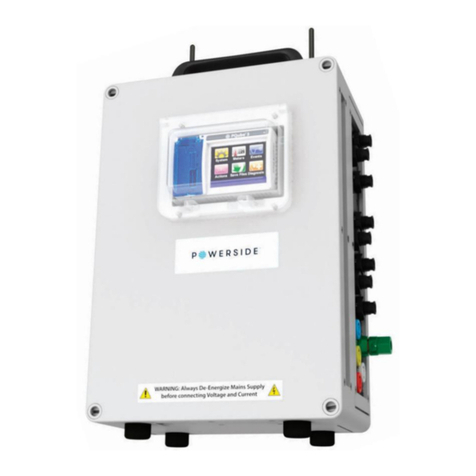
POWERSIDE
POWERSIDE PQube 3 installation guide
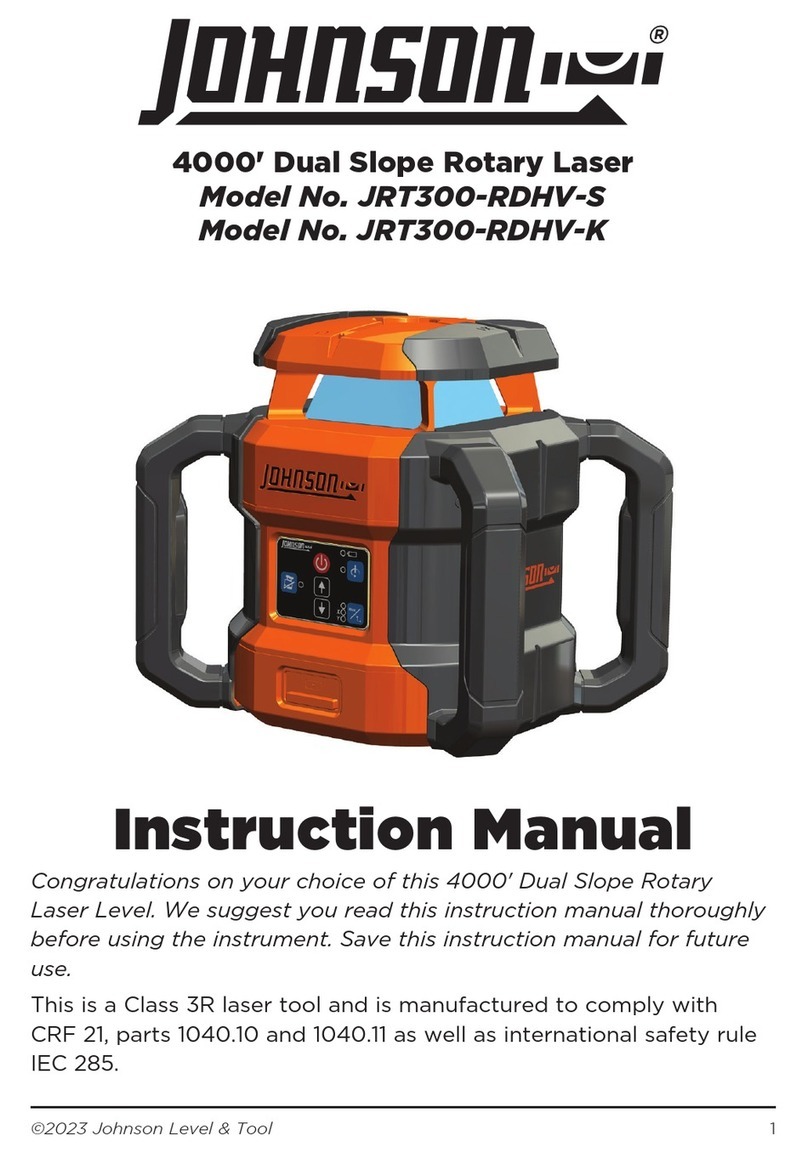
Johnson
Johnson JRT300-RDHV-S instruction manual

Cedes
Cedes APS Installation and operation manual
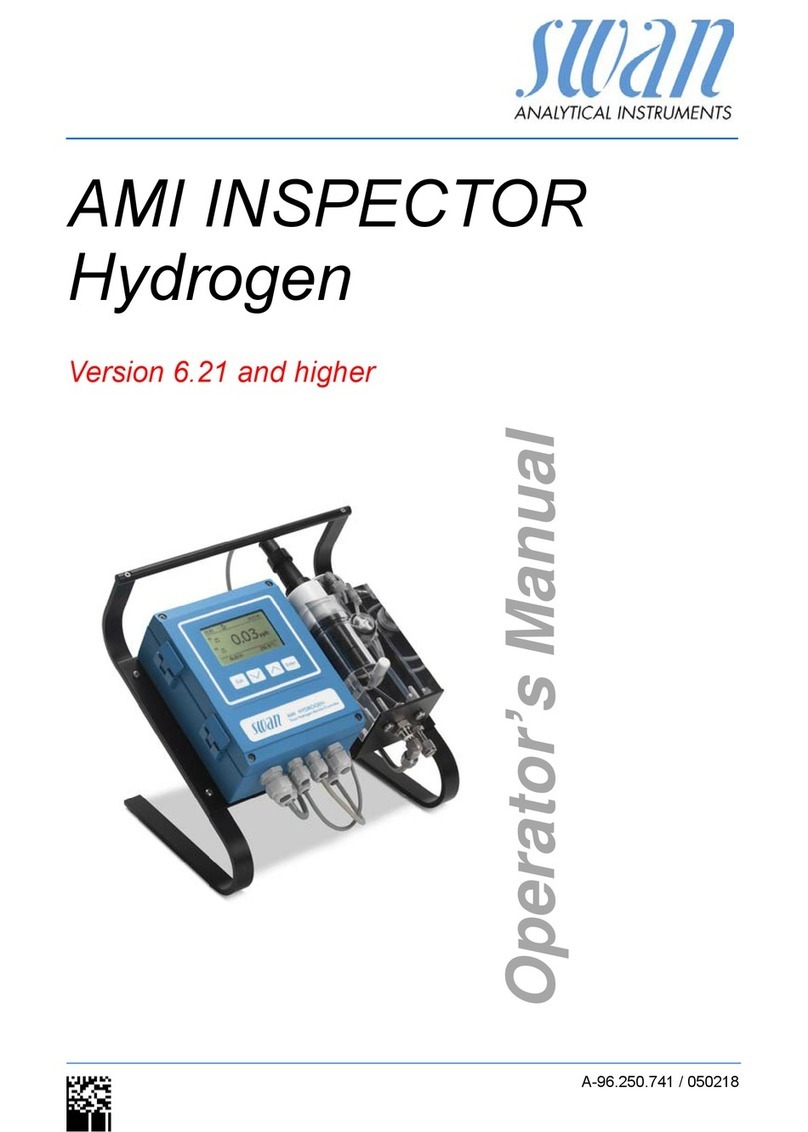
Swan Analytical Instruments
Swan Analytical Instruments AMI INSPECTOR Hydrogen Operator's manual
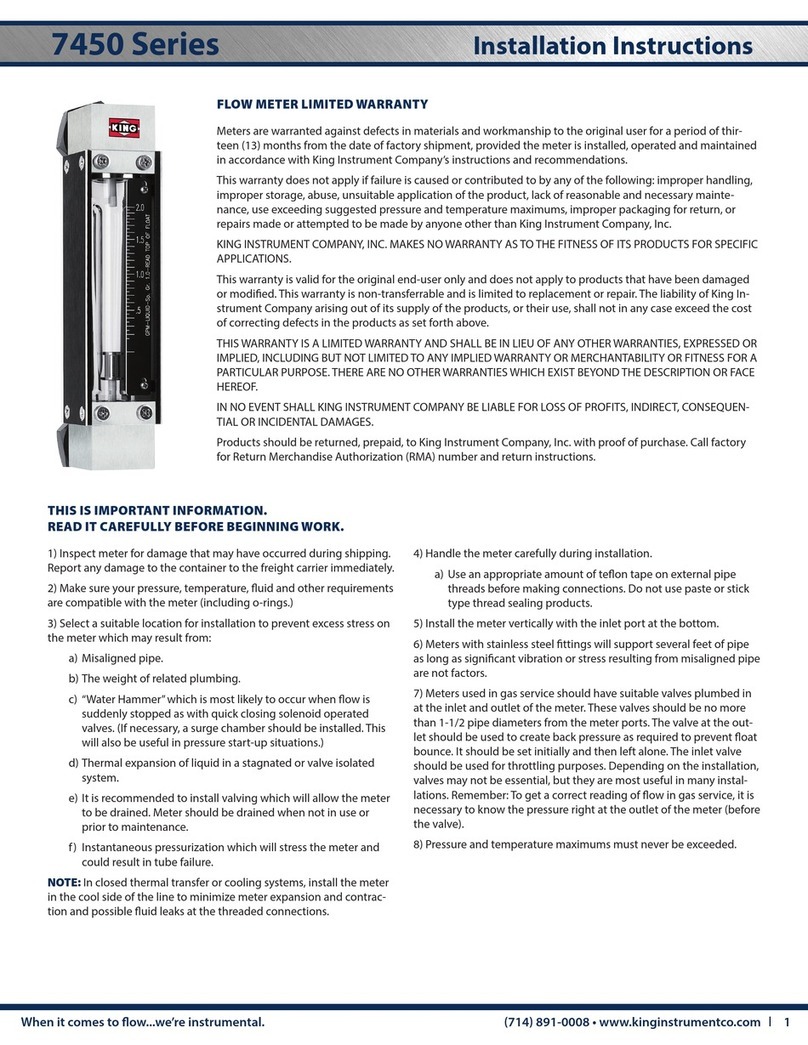
King Instrument
King Instrument 7450 Series installation instructions

BETAR
BETAR VEGA SHVE user manual
